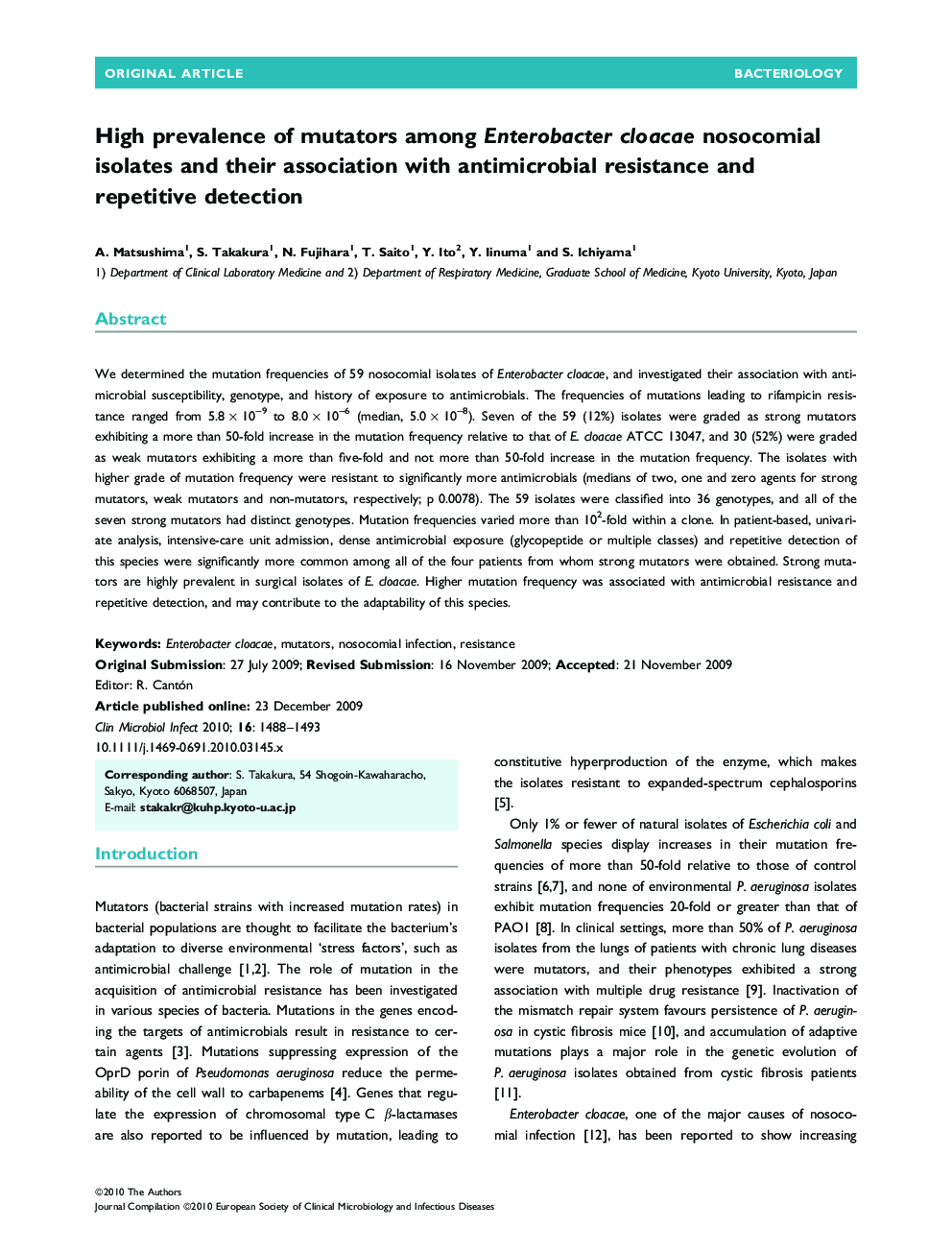| Article ID | Journal | Published Year | Pages | File Type |
|---|---|---|---|---|
| 6131215 | Clinical Microbiology and Infection | 2010 | 6 Pages |
Abstract
We determined the mutation frequencies of 59 nosocomial isolates of Enterobacter cloacae, and investigated their association with antimicrobial susceptibility, genotype, and history of exposure to antimicrobials. The frequencies of mutations leading to rifampicin resistance ranged from 5.8 Ã 109 to 8.0 Ã 106 (median, 5.0 Ã 108). Seven of the 59 (12%) isolates were graded as strong mutators exhibiting a more than 50-fold increase in the mutation frequency relative to that of E. cloacae ATCC 13047, and 30 (52%) were graded as weak mutators exhibiting a more than five-fold and not more than 50-fold increase in the mutation frequency. The isolates with higher grade of mutation frequency were resistant to significantly more antimicrobials (medians of two, one and zero agents for strong mutators, weak mutators and non-mutators, respectively; p 0.0078). The 59 isolates were classified into 36 genotypes, and all of the seven strong mutators had distinct genotypes. Mutation frequencies varied more than 102-fold within a clone. In patient-based, univariate analysis, intensive-care unit admission, dense antimicrobial exposure (glycopeptide or multiple classes) and repetitive detection of this species were significantly more common among all of the four patients from whom strong mutators were obtained. Strong mutators are highly prevalent in surgical isolates of E. cloacae. Higher mutation frequency was associated with antimicrobial resistance and repetitive detection, and may contribute to the adaptability of this species.
Related Topics
Life Sciences
Immunology and Microbiology
Microbiology
Authors
A. Matsushima, S. Takakura, N. Fujihara, T. Saito, Y. Ito, Y. Iinuma, S. Ichiyama,
